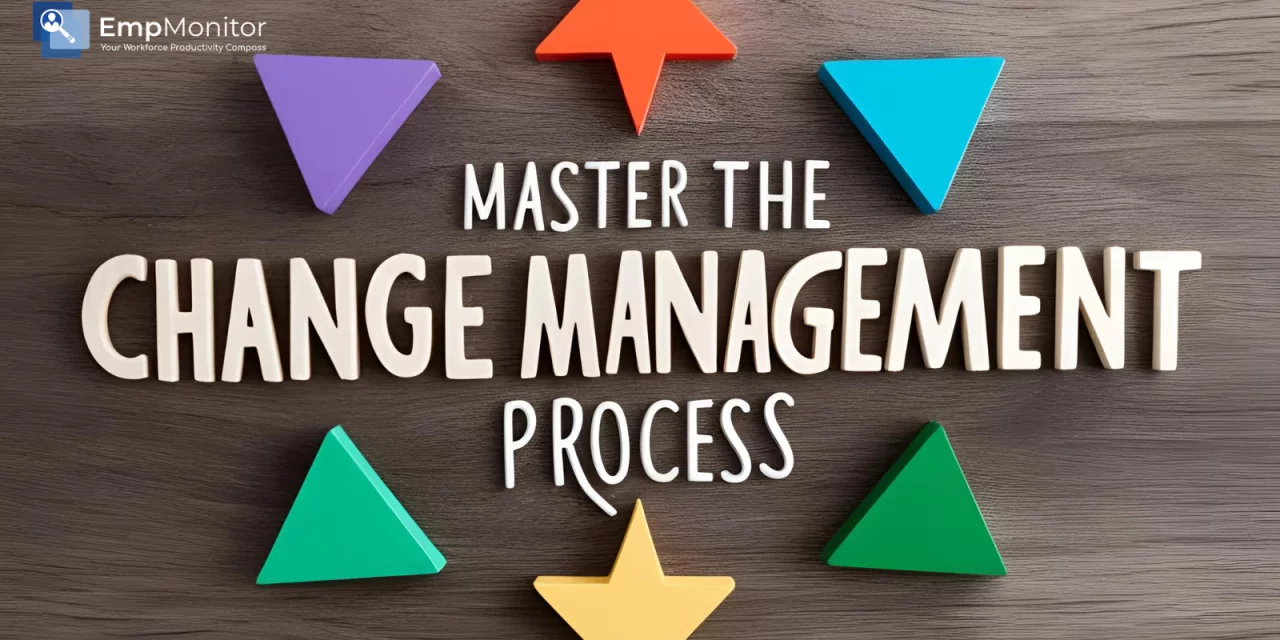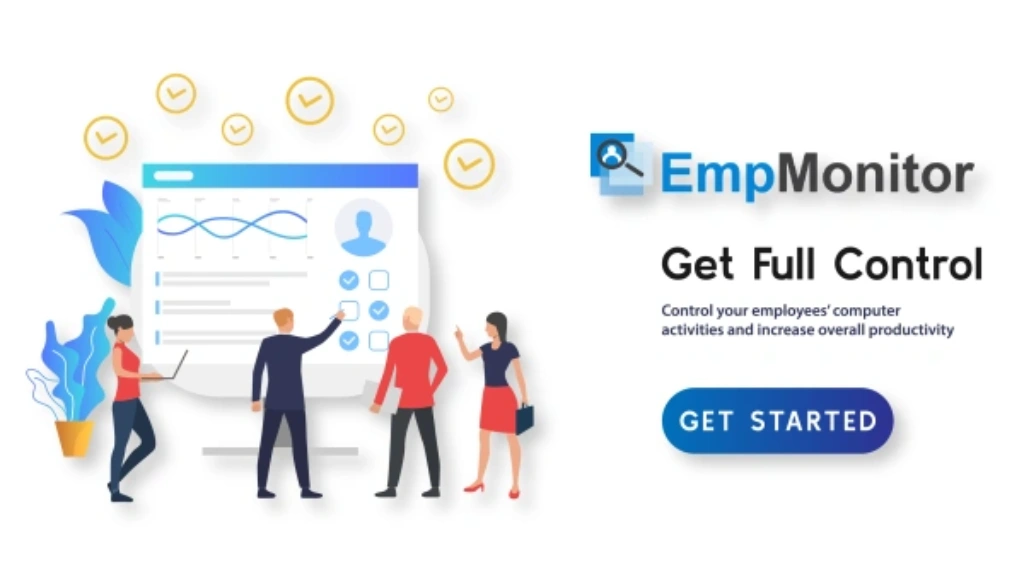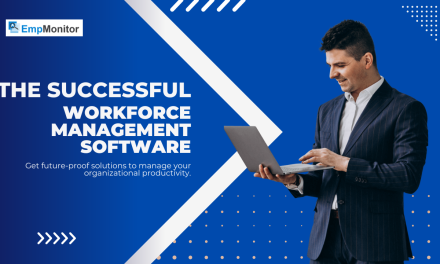Implementing new software, redefining team roles, or changing company culture involves significant risks. A misstep can stall productivity, erode trust, and drain budgets. Yet with a clear change management process, organizations transform rocky detours into smooth highways of progress. In this post, we’ll explore why a structured approach is non-negotiable, then guide you through proven frameworks, common pitfalls, and best practices. Ready to turn uncertainty into opportunity? Let’s begin.
In a hurry? Listen to the blog instead!
What Is Change Management Process?
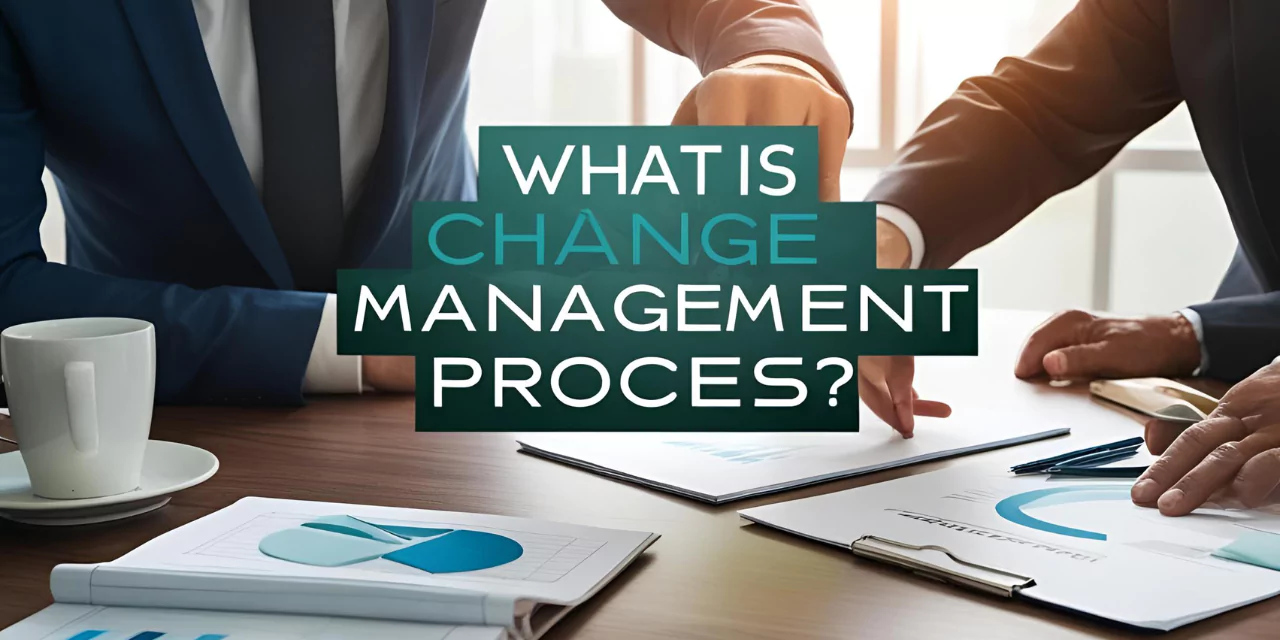
A typical change effort unfolds across phases: initiating with stakeholder analysis, diagnosing current-state challenges, designing the desired future state, building and testing solutions, rolling out changes, and finally reinforcing gains. Clear roles—like project sponsors, change agents, and frontline champions—ensure accountability and amplify your reach. Emphasizing communication, collaboration, and continuous feedback, organizations can use a robust change management process to measure progress at every step and course-correct before minor issues become major setbacks.
Four Facets Of Change

1. Major Overhauls
Think enterprise-wide software replacements or a vast reorganization of business units. These shifts alter how people work day to day and require a rigorous process to avoid chaos. For example, when a global firm consolidated regional ERP systems into one cloud platform, they staged pilot groups, ran parallel testing, and maintained fallback procedures. That blend of technical rigor and stakeholder collaboration is the hallmark of a successful change management process.
2. Step-by-Step Adjustments
Updating a single tool or tweaking a workflow might seem minor, but even small alterations demand clear communication and targeted support so teams don’t slip back into old habits. At one mid-sized marketing agency, swapping out their task tracker meant training two pilot teams first and refining user guides based on real questions—an agile approach that kept disruption minimal.
3. Radical Swings
Jumping from one extreme to another—say, moving entirely remote then back in-office—carries its own challenges. You need rapid feedback loops and flexible plans to keep morale and productivity consistent. A tech startup that toggled between remote and hybrid models used weekly pulse surveys and virtual “office hours” to surface frustrations and adjust policies.
4. Mindset Revolutions
When you shift from task-based to outcome-based thinking, or embed new values like innovation-first, you’re not just changing processes—you’re reshaping culture. Sustained coaching, role modeling, and storytelling become your compass. A nonprofit that transitioned to a data-driven decision culture held monthly “insights panels” where teams shared stories of how metrics informed better outcomes, turning abstract goals into relatable victories.
No matter which facet applies, your change management process must adapt to your organization’s unique needs, balancing structure with agility.
Proven Models To Guide Your Journey

ADKAR Model
- Awareness of the need for change
- Desire to support and participate
- Knowledge of how to change
- Ability to demonstrate new skills
- Reinforcement to sustain progress
ADKAR focuses on the individual journey and dovetails with any broader change management process by highlighting personal barriers and accelerators. Many organizations start with ADKAR to build grassroots support before scaling larger initiatives.
Eight Steps To Lasting Shifts (Kotter’s Model)
- Create urgency– Spark the need for change by highlighting immediate challenges or missed opportunities.
- Build a guiding coalition– Form a team of influential leaders committed to driving the change forward.
- Form a clear vision– Craft a compelling picture of the future that aligns with organizational goals.
- Enlist volunteers – Engage enthusiastic employees who can model and promote the new direction.
- Remove obstacles – Identify and eliminate barriers—whether structural, procedural, or cultural—that hinder progress.
- Showcase short-term wins – Celebrate early achievements to validate effort and reinforce commitment.
- Keep momentum – Maintain progress with ongoing communication, support, and visible leadership involvement.
- Anchor new practices – Embed changes into the organizational culture so they become the standard way of working.
Kotter’s framework emphasizes rallying leaders and celebrating progress to keep energy high. It plugs seamlessly into your overarching change management process, ensuring each step builds on the last. For example, a healthcare provider used short-term win celebrations after each successful pilot clinic went live, fueling enthusiasm for the next rollout.
Bridges’ Transition Map
William Bridges breaks change into three phases—ending, neutral zone, beginning—helping you address the emotional journey alongside tasks. Incorporating Bridges’ model within your change management process ensures you recognize both operational and human factors at each stage. One financial services firm ran “farewell sessions” to acknowledge ending routines, followed by guided workshops in the neutral zone, and celebration events upon kick-off of the new system.
Selecting a model should complement your change management process and organizational culture. Later, we’ll discuss how to mix and match elements from different frameworks to suit your context.
Common Roadblocks And How To Avoid Them?

Leadership Silence
When executives stay on the sidelines, teams lose faith. Ensure visible sponsorship from day one. Regular executive check-ins—even 15-minute standing updates—reinforce commitment and provide a forum for quick decisions.
One-Way Broadcasts
Announcing changes without dialogue breeds confusion. Create two-way channels—town halls, Q&A sessions, and feedback surveys—so questions can surface and be answered promptly. In a recent rollout, a retail chain used dedicated chat groups to field real-time questions, reducing support tickets by 30%.
No Success Criteria
If you can’t measure progress, you can’t prove impact. Define metrics, like adoption rate or error reduction, before roll-out and tie them into your change management process governance. Publishing these KPIs in a shared dashboard makes accountability transparent and sparks friendly competition between teams.
People Overlooked
Processes won’t stick if end users feel ignored. Involve frontline staff early to surface real concerns and solutions, weaving their input into your change management process. One logistics firm held “ride-alongs” where managers shadowed warehouse staff during new system trials—insights from the floor led to tweaks that boosted efficiency by 15%.
Training Gaps
Brief demos won’t cut it. Offer hands-on sessions, on-demand resources, and peer coaching to build confidence. Make training a core element of your change management process. A software company paired every major release with “office hours” support and a gamified learning portal, increasing platform use by 25%.
Momentum Dip
Initial buzz fades fast. Use early wins to keep energy alive by celebrating milestones, sharing testimonials, and recognizing champions. Include these celebrations in your change management process calendar to help teams stay motivated. For example, a manufacturing plant that tracked daily usage noticed a significant boost in morale when teams competed for “Top Adopter” ribbons.
You strengthen your change management approach by identifying potential pitfalls early and building strategies to address them. Introducing a tool like EmpMonitor can bring clarity by offering real-time visibility into user behavior. This allows you to detect adoption gaps early, adjust your strategy, and sustain momentum across every stage of the change.
How EmpMonitor Improves Process Management?
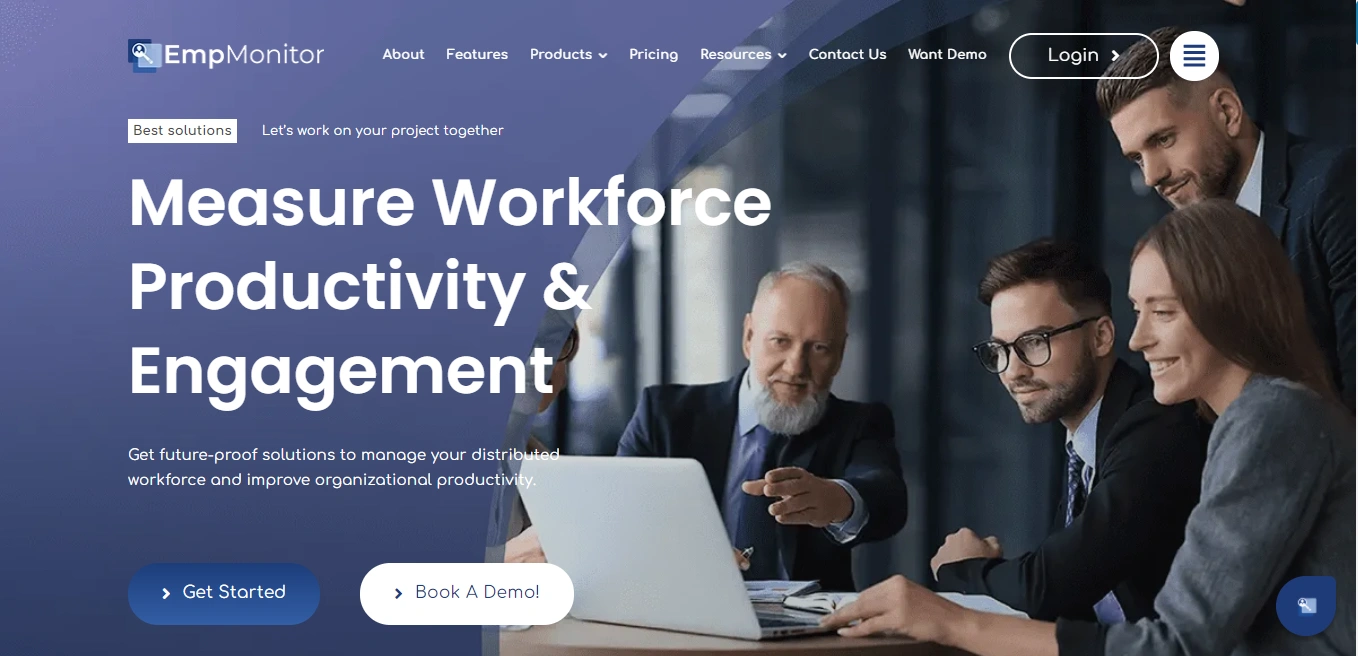
EmpMonitor provides organizations with clear, actionable visibility into how employees are adapting to new workflows, tools, and systems. Rather than relying solely on surveys or feedback forms, you gain access to objective data that reveals how change is being adopted in real time.
Key Features That Support Change Management
User Behavior Insights
Track which systems, applications, or processes are being followed, and where users may be falling back into outdated routines.
Activity Dashboards
Get a real-time overview of usage patterns across teams, departments, or entire locations to identify where further support or training is needed.
Custom Alerts
Receive notifications when workflows are bypassed or when usage deviates from expected behavior, allowing for immediate corrective action.
Role-Based Reporting
Compare engagement and adoption metrics across different roles or groups, helping you tailor communication and coaching more effectively.
Seamless Integration
EmpMonitor can be connected with collaboration tools, learning platforms, and help desk systems to centralize your change tracking efforts.
By embedding EmpMonitor into your change management process, you don’t just implement change—you guide, measure, and optimize it. It helps teams adapt with confidence and ensures that the transformation sticks long after the initial launch.
Best Practices For Smooth Transitions
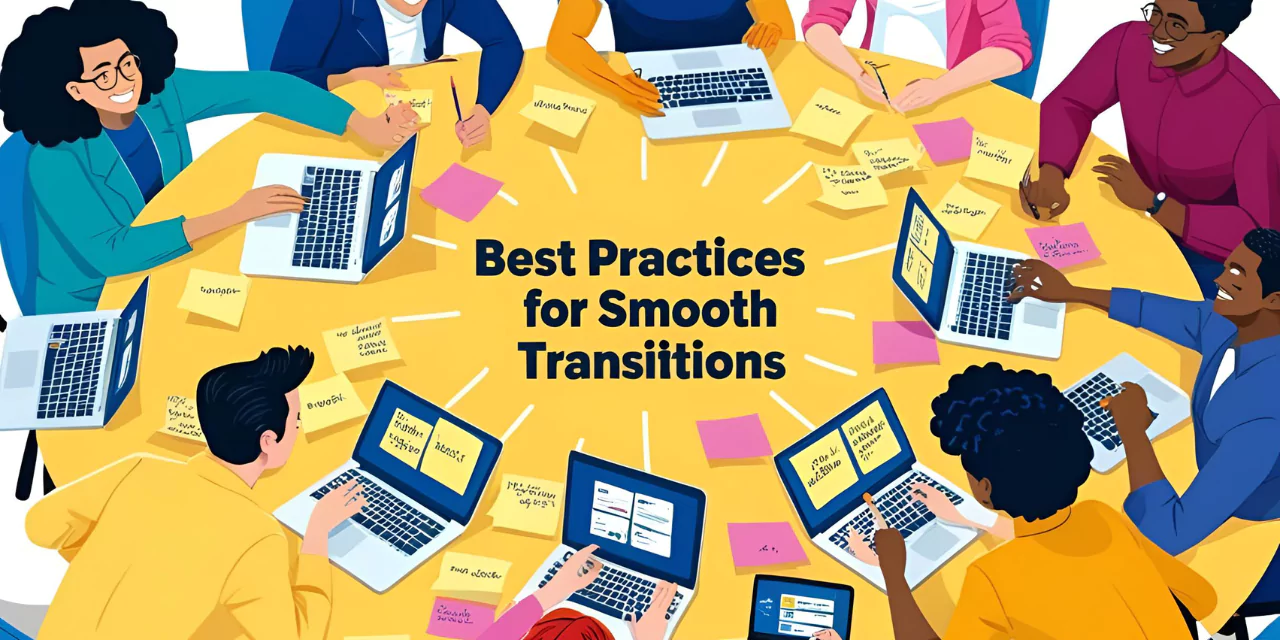
Form a Governance Team
Establish a steering committee with executive sponsors, change champions, and front-line representatives. Clarify roles and decision rights early: who approves budgets, who signs off on milestones, and who escalates risks. This governance layer cements accountability within your change management process.
Engage End Users Early
From initial discovery workshops to pilot programs, involve those directly affected by change. Their firsthand insights into daily work patterns uncover hidden dependencies, and their buy-in raises overall acceptance. Use quick surveys, focus groups, and shadowing sessions to inform your approach.
Pick the Right Rollout Style
Three common methods help manage risk and resource constraints:
- Phased Waves: Deploy to select user groups in stages, gathering feedback after each wave.
- Linear Release: Introduce features or process steps sequentially, with ample time for support.
- All-At-Once: Launch broadly for maximum impact, supported by robust training and daily check-ins.
Choose the style that aligns with your organizational tolerance for risk and your change management process timeline.
Use Multi-Channel Messaging
Different stakeholders absorb information in different ways. Combine email campaigns, intranet articles, leadership town halls, and in-app pop-ups to reinforce key messages. Consistent, repeated touchpoints prevent confusion and foster transparency.
Highlight Early Successes
Celebrate small wins, whether a team hits a productivity target or resolves a support ticket faster. Share these stories company-wide to inspire lagging groups and build confidence in the new way of working.
Collect Continuous Feedback
After launch, don’t assume the work is done. Use pulse surveys, feedback forms, and one-on-one interviews to gather real-time insights. Feed this input into your plan to refine training, adjust communications, and fine-tune processes.
Embedding these best practices into your management process ensures each phase builds toward lasting, organization-wide transformation.
Building Your Change Management Plan, Step by Step

Craft A Persuasive Case
Write a concise proposal with Offorte, outlining the objectives, benefits, and risks of inaction. Ground your argument in financial projections, customer expectations, and competitive dynamics. A compelling narrative galvanizes support and secures resources.
Select Sponsors and Champions
Identify visible leaders for sponsorship and respected peers as champions. Sponsors remove roadblocks and allocate budget; champions advocate change within their teams, host Q&A sessions, and model new behaviors.
Map Your Communications
Define audiences, key messages, channels, and timing. For example, executives might receive monthly impact reports, while front-line staff get weekly training tips. A clear communications schedule keeps everyone informed and aligned.
Set Success Metrics
Agree on KPIs tied to business outcomes: adoption rates, time-to-completion metrics, error reduction statistics, or customer satisfaction scores. Establish a reporting cadence—weekly, monthly, or quarterly—to monitor progress.
Choose Tools and Templates
Leverage project management charters, stakeholder analysis grids, risk registers, and training checklists. Pair these with change-specific templates—like readiness assessments and feedback trackers—to streamline execution.
Design Learning Paths
Develop role-based training modules: live workshops, recorded demos, interactive sandboxes, and peer mentoring. Schedule refresher sessions at key intervals—30 days, 90 days, and six months post-launch—to reinforce skills.
By following this structured plan, your change management process moves from aspiration to action, delivering clarity at every stage.
Read More
9+ Task Management Tips You Should Know This Year
6 Easiest And Most Effective Ways To Manage Projects
Measuring Progress And Refining Your Approach
No initiative goes perfectly according to plan. Ongoing monitoring and agility are essential to staying on course and making meaningful adjustments throughout the change management process flow.
- Adoption Rate: Track the percentage of users completing new tasks or using new tools.
- Productivity Gains: Measure time saved, output per employee, or revenue improvements.
- Error Reduction: Monitor support tickets, process deviations, and compliance breaches.
Leverage EmpMonitor’s dashboards and reports alongside direct feedback to spot adoption dips. As a comprehensive employee monitoring software, EmpMonitor helps pinpoint when metrics fall short, whether it’s due to training gaps, unclear communication, or system-related friction, and provides the clarity needed to apply targeted interventions.
This data-driven approach helps optimize the change management process steps, keeping your strategy responsive and efficient. Incorporating a bi-weekly review cycle allows you to address small issues before they grow, ensuring steady progress and sustained results.
With built-in tools tailored for productivity management software and workforce management software capabilities, EmpMonitor empowers leadership teams to make informed decisions based on real-time employee activity and process adoption data.
Sustaining Momentum For Lasting Impact

- Refresher Sessions: Host brief follow-ups at 30-day, 90-day, and 180-day marks post-implementation.
- Performance Reviews: Tie change adoption into employee goals and appraisals.
- Regular Audits: Periodic reviews help maintain compliance and reduce the risks of backsliding.
- Community of Practice: Encourage knowledge-sharing groups that provide support, troubleshoot, and celebrate wins.
- Recognition Programs: Acknowledge “Change Champions” with badges or certificates to motivate and reward continued progress.
These practices keep the change management process visible and engaging, transforming it from a temporary project into a continuous cycle of improvement. Rituals like quarterly hackathons or team-led process updates build a shared sense of ownership and keep momentum alive.
Conclusion
Change is inevitable, but chaos doesn’t have to be. With a structured change management process, you can navigate even the most complex transformations with clarity and confidence. By combining proven frameworks, anticipating roadblocks, and leveraging tools like EmpMonitor for real-time insights, your organization can drive meaningful and lasting change. Remember, success isn’t just about launching a new system or process—it’s about helping people embrace it, use it, and thrive with it. Whether planning a small adjustment or a major overhaul, the right approach turns uncertainty into opportunity and ensures your transformation not only happens but endures.
Frequently Asked Questions (FAQs)
- How long does it typically take to implement a change management process?
The duration varies based on the complexity of the change. Small-scale changes may take a few weeks, while enterprise-level transformations can span several months. It’s essential to allocate adequate time for planning, communication, training, and post-implementation evaluation. - What’s the role of leadership in successful change management?
Leadership sets the tone for change. Leaders must clearly communicate the vision, support their teams emotionally and strategically, and lead by example. Their active involvement often determines the level of employee buy-in and overall success. - Can change management be applied to remote or hybrid teams?
Absolutely. In fact, remote and hybrid teams often need more structured change management to ensure alignment across locations. Leveraging digital communication tools and employee monitoring software like EmpMonitor can bridge the gap and maintain engagement during transitions. - What happens if a change initiative fails?
Failure can offer valuable lessons. It’s crucial to conduct a post-mortem analysis to understand what went wrong—whether it was poor communication, lack of training, or resistance. These insights help refine future change strategies and avoid repeated mistakes.

